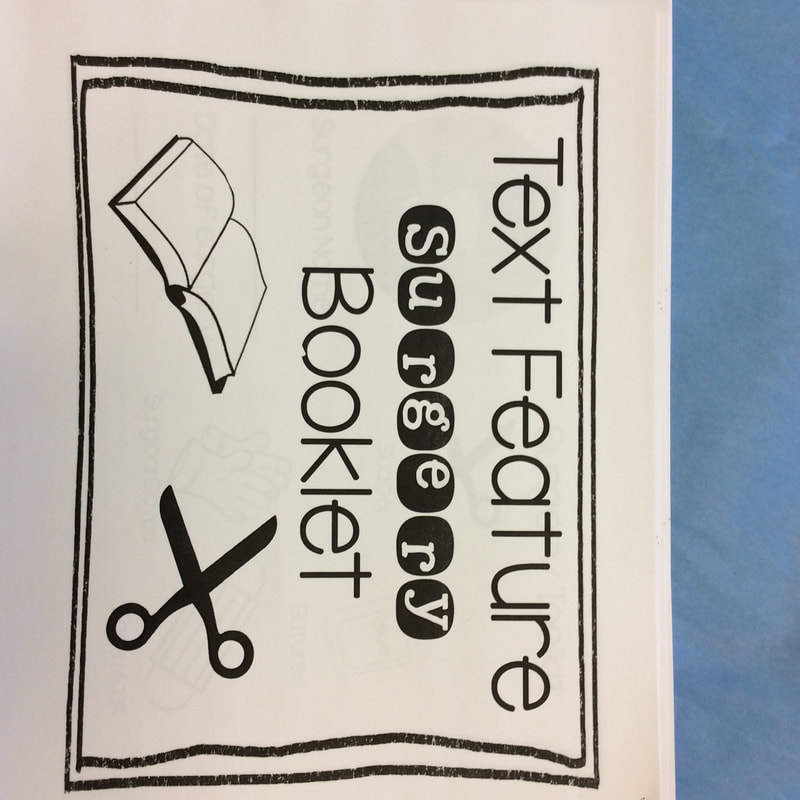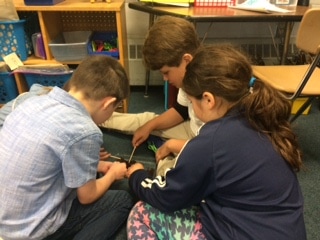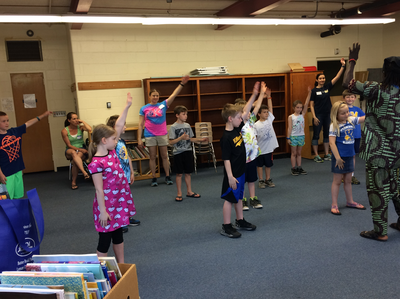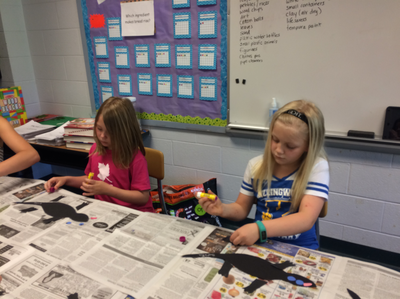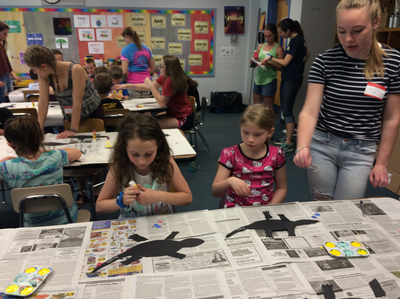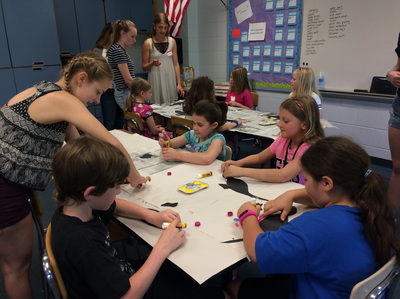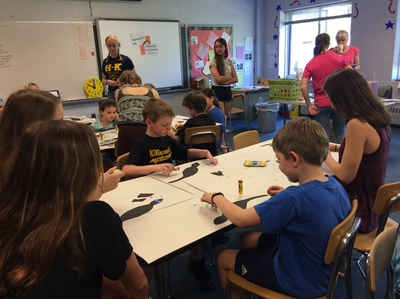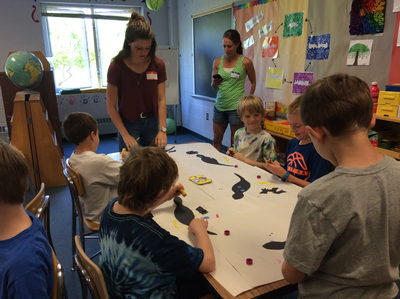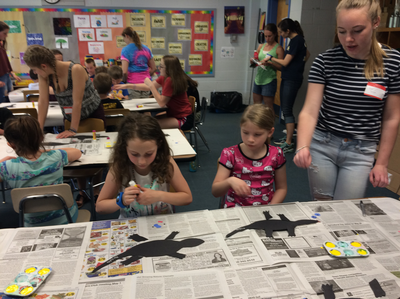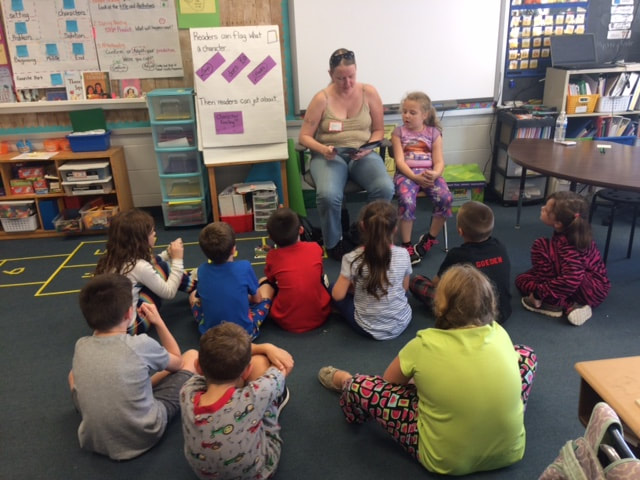Readers' Workshop
Several components of our Reading Workshop are as followed:
Mini Lessons: This is a small lesson at the beginning of our reading workshop. The teacher models a strategy and gives an opportunity for the students to think, discuss the strategy/lesson with a partner, and share their thoughts with the class. The mini lesson presents the lesson of the day and sets the tone for the reading workshop.
Anchor Charts: This is a chart that was created during the mini lesson. Anchor charts can be created for a variety of reasons including modeling of a strategy, outlining steps or directions, or setting expectations for an activity. Students are able to refer to this chart during their independent reading as they are posted around the classroom.
Stamina: One goal of our reading workshop is to build stamina. Students are practicing being active thinkers as they begin to read for longer periods of time. During this time they will read from texts that are at their independent level. They will apply strategies that have been modeled in the class to improve their accuracy, fluency, and comprehension. The end of year goal for second grade is 45 minutes of independent reading. We will periodically set and check our stamina goals as a class and as individual students.
Leveled Texts: A huge component of our Reading Workshop is to have students reading books that are a good fit for their reading level. Levels are determined from a variety of assessments and observations including district benchmark testing and conferencing anecdotal notes. We look at a student's performance in the areas of accuracy, fluency, and comprehension in order to determine their independent level. Typically as reading levels increase, students spend longer periods of time at each level as their comprehension work increases in difficulty. Students read independently while they sit with their partners or small groups.
Responses: Students use sticky notes and a variety of graphic organizers to track their thinking and comprehension strategies as they read. This helps them to be active readers and helps to grow their comprehension skills.
Partner Talking: After independent reading, partners talk about the books that they have read. Talking about their books is another way to help increase their comprehension. Students share the strategies that they have used while reading and offer their thoughts about their book. As the year goes on, students will work to effectively partner talk by learning to ask questions, share ideas, and offer critical thinking.
Conferencing/Small Group Instruction: During the independent reading time, the role of the teacher is to meet with several students, and provide conferences. These conferences can be individual, partnerships, or small groups. There are a variety of purposes to conferencing, including researching the progress of students and providing explicit instruction in the areas of accuracy, fluency, and comprehension. Conferences can also occur during partner talking to help students to grow their conversations. Small groups also provide instruction to students and can be selected by similar ability or with similar skill practice in mind.
Mini Lessons: This is a small lesson at the beginning of our reading workshop. The teacher models a strategy and gives an opportunity for the students to think, discuss the strategy/lesson with a partner, and share their thoughts with the class. The mini lesson presents the lesson of the day and sets the tone for the reading workshop.
Anchor Charts: This is a chart that was created during the mini lesson. Anchor charts can be created for a variety of reasons including modeling of a strategy, outlining steps or directions, or setting expectations for an activity. Students are able to refer to this chart during their independent reading as they are posted around the classroom.
Stamina: One goal of our reading workshop is to build stamina. Students are practicing being active thinkers as they begin to read for longer periods of time. During this time they will read from texts that are at their independent level. They will apply strategies that have been modeled in the class to improve their accuracy, fluency, and comprehension. The end of year goal for second grade is 45 minutes of independent reading. We will periodically set and check our stamina goals as a class and as individual students.
Leveled Texts: A huge component of our Reading Workshop is to have students reading books that are a good fit for their reading level. Levels are determined from a variety of assessments and observations including district benchmark testing and conferencing anecdotal notes. We look at a student's performance in the areas of accuracy, fluency, and comprehension in order to determine their independent level. Typically as reading levels increase, students spend longer periods of time at each level as their comprehension work increases in difficulty. Students read independently while they sit with their partners or small groups.
Responses: Students use sticky notes and a variety of graphic organizers to track their thinking and comprehension strategies as they read. This helps them to be active readers and helps to grow their comprehension skills.
Partner Talking: After independent reading, partners talk about the books that they have read. Talking about their books is another way to help increase their comprehension. Students share the strategies that they have used while reading and offer their thoughts about their book. As the year goes on, students will work to effectively partner talk by learning to ask questions, share ideas, and offer critical thinking.
Conferencing/Small Group Instruction: During the independent reading time, the role of the teacher is to meet with several students, and provide conferences. These conferences can be individual, partnerships, or small groups. There are a variety of purposes to conferencing, including researching the progress of students and providing explicit instruction in the areas of accuracy, fluency, and comprehension. Conferences can also occur during partner talking to help students to grow their conversations. Small groups also provide instruction to students and can be selected by similar ability or with similar skill practice in mind.
Parent Reading Unit Letters
| reading_unit_1_parent_letter.docx | |
| File Size: | 44 kb |
| File Type: | docx |
| reading_unit_2_parent_letter.docx | |
| File Size: | 47 kb |
| File Type: | docx |
| reading_unit_3_parent_letter-_bigger_books_mean_amping_up_reading_power.docx | |
| File Size: | 63 kb |
| File Type: | docx |
| reading_unit_getting_to_know_characters_and_their_stories.docx | |
| File Size: | 41 kb |
| File Type: | docx |
| reading_unit_5_parent_letter.docx | |
| File Size: | 53 kb |
| File Type: | docx |
